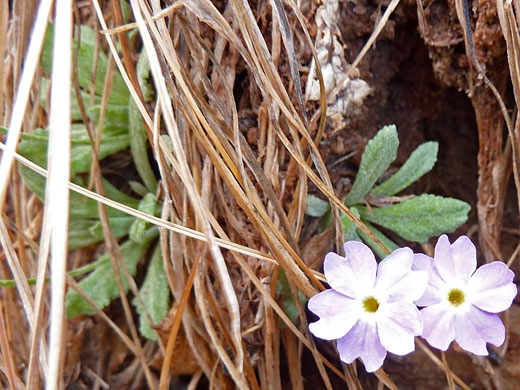Common names:
Cave primrose, Easter primrose
Family:
Scientific name:
Primula specuicola
Main flower color:
Range:
Northern Arizona and southeast Utah
Height:
Up to 10 inches
Habitat:
Seeps and moist alcoves in canyons, from 2,700 to 8,000 feet
Leaves:
Basal, spatulate, up to 5 inches long and 0.8 inches wide, with wavy-toothed edges and a whitish (farinose) surface
Season:
April to July
Primula specuicola is an uncommon species, found only in sheltered, often inaccessible alcoves in the canyons of the Colorado Plateau - in particular along the Green and Colorado Rivers, in the Grand Canyon, Glen Canyon and Canyonlands national parks, where it can be locally abundant.
Leaves are quite thick, widest above the middle, and the margins are lined with irregular, wavy teeth. The lower leaf surfaces lack the deep, branched veins that are found for some similar species. Leaf surfaces are hairless but do have a white, flour-like covering.
Flowers consist of a green, bell-shaped calyx and a pale purple corolla, with a tube up to 0.4 inches in length (twice that of the calyx), opening to five petals, around 0.8 inches in diameter. Petal tips are deeply notched. Flowers form in loose clusters of up to 30 heads, at the top of the leafless stalks.
Leaves are quite thick, widest above the middle, and the margins are lined with irregular, wavy teeth. The lower leaf surfaces lack the deep, branched veins that are found for some similar species. Leaf surfaces are hairless but do have a white, flour-like covering.
Flowers consist of a green, bell-shaped calyx and a pale purple corolla, with a tube up to 0.4 inches in length (twice that of the calyx), opening to five petals, around 0.8 inches in diameter. Petal tips are deeply notched. Flowers form in loose clusters of up to 30 heads, at the top of the leafless stalks.
All Contents © Copyright The American Southwest | Comments and Questions | Contribute | Site Map


